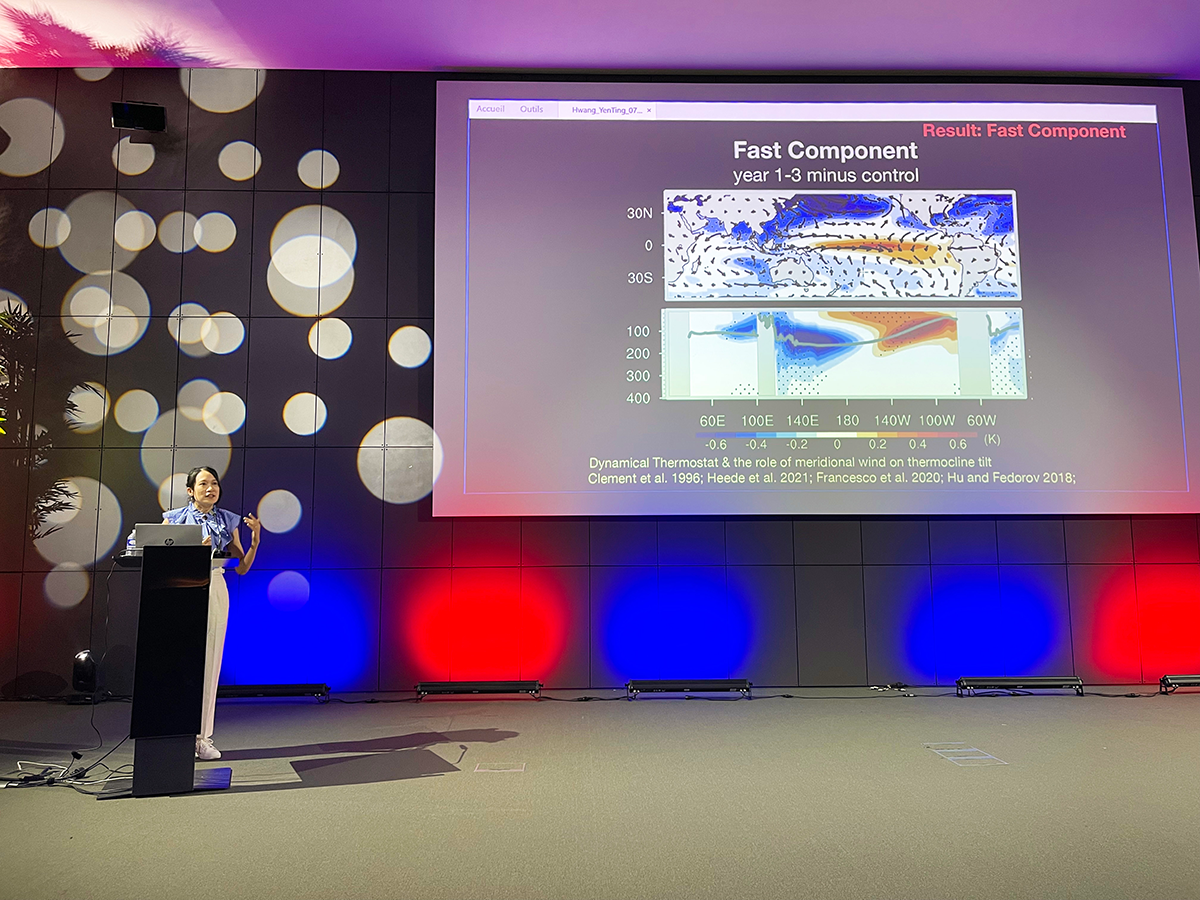
Schematic illustration of possible forced mechanisms for the tropical Pacific surface warming pattern trends.
The equatorial Pacific plays a crucial role in regulating tropical cloud formation and regional weather extremes, earning it the nickname “the pacemaker of global warming.” Though its impact may seem subtle, this oceanic region has been a silent hero, slowing the pace of global warming. Now, climate scientists are on a quest to discover whether this protective mechanism will continue to pulsate in our favor.
Global climate models have faced stubborn challenges in accurately tracking and capturing the “La Niña-like” sea surface temperature pattern, which has moderated warming. In a recent publication in Nature (June), Associate Professor Yen-Ting Hwang of the Department of Atmospheric Sciences and an international team with members from Japan, Germany, the UK, Australia, and the USA discuss the causes behind these patterns and forecasted a shift in the forces at play.
The researchers propose that the key elements contributing to the “La Niña-like” pattern over the past 40 years are largely temporary. They anticipate a future scenario where the eastern equatorial Pacific – and, by extension, the globe – experiences intensified warming. To get ahead of this potential shift, scientists need a firmer grasp of the Earth’s response timescales to human-induced climate change. To tackle this issue, the team has established an interdisciplinary research group called “TROPICS” (TROpical PacIfiC SST Warming PatternS), bringing together experts in observation, modeling, and theory.
One of the group’s key initiatives is to apply methodologies from an earlier study led by Professor Hwang, published earlier this year in Proceedings of the National Academy of Sciences (PNAS), investigating the factors shifting the tropical Pacific warming pattern. This study separated the responses to anthropogenic aerosols into fast and slow timescales, providing insights into the unexpected multidecadal cooling in the eastern tropical Pacific. The group plans to utilize similar approaches to study the effects of greenhouse gases, ozone, melting ice sheets, and other factors.
Ultimately, the mission of the international efforts in keeping with Prof. Hwang’s research team is to refine climate models, sharpen predictive accuracy, and solve the intricate puzzles of our climate system. They’re racing against time to anticipate the shift to an El Niño-like state before nature reveals the final answer.

Prof. Hwang presenting the PNAS study and findings at the Climate Sensitivity Conference in Paris.

The Climate Dynamics and Global Change research group led by Prof. Hwang.


